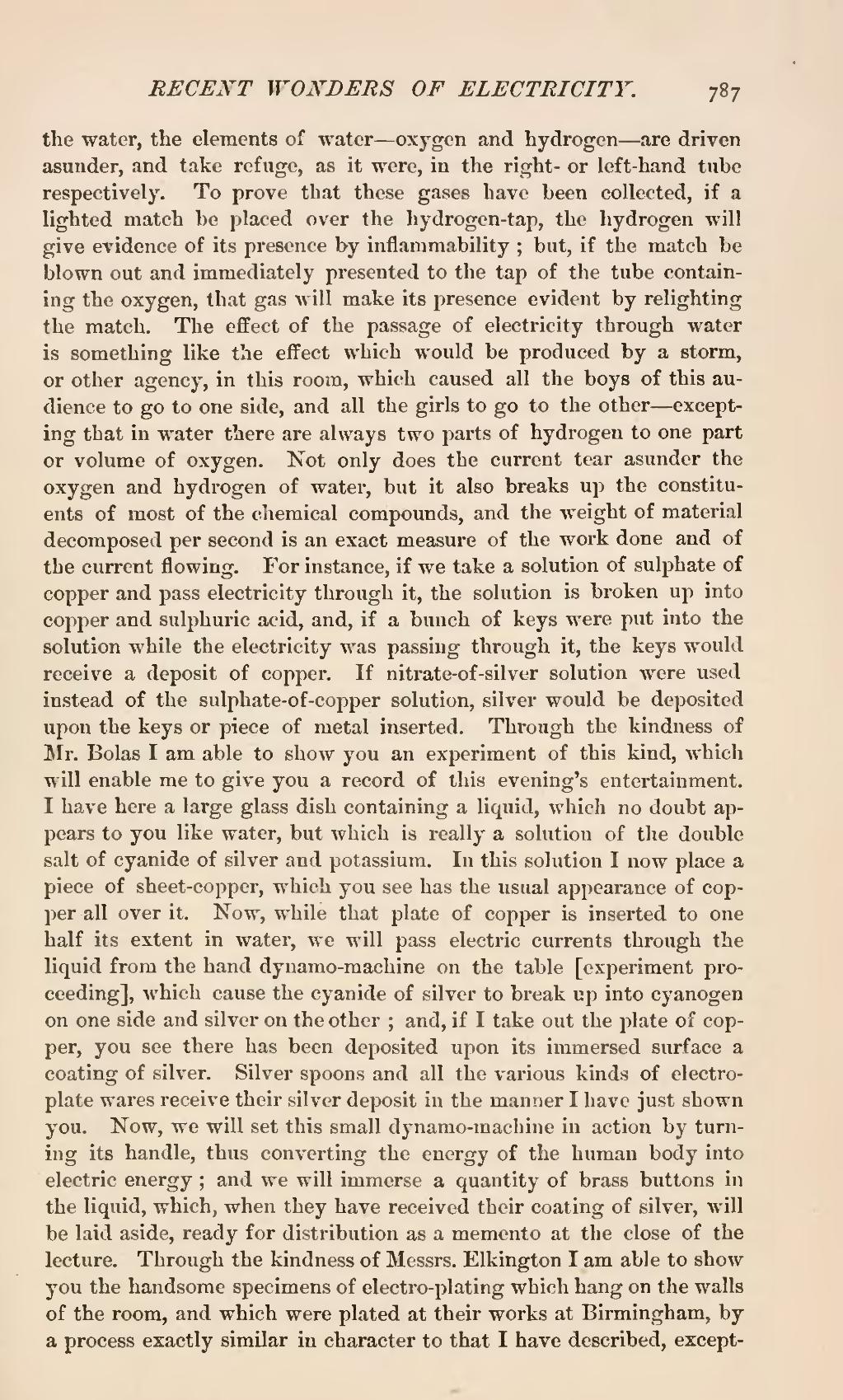the water, the elements of water—oxygen and hydrogen—are driven asunder, and take refuge, as it were, in the right-or left-hand tube respectively. To prove that these gases have been collected, if a lighted match be placed over the hydrogen-tap, the hydrogen will give evidence of its presence by inflammability; but, if the match be blown out and immediately presented to the tap of the tube containing the oxygen, that gas will make its presence evident by relighting the match. The effect of the passage of electricity through water is something like the effect which would be produced by a storm, or other agency, in this room, which caused all the boys of this audience to go to one side, and all the girls to go to the other—excepting that in water there are always two parts of hydrogen to one part or volume of oxygen. Not only does the current tear asunder the oxygen and hydrogen of water, but it also breaks up the constituents of most of the chemical compounds, and the weight of material decomposed per second is an exact measure of the work done and of the current flowing. For instance, if we take a solution of sulphate of copper and pass electricity through it, the solution is broken up into copper and sulphuric acid, and, if a bunch of keys were put into the solution while the electricity was passing through it, the keys would receive a deposit of copper. If nitrate-of-silver solution were used instead of the sulphate-of-copper solution, silver would be deposited upon the keys or piece of metal inserted. Through the kindness of Mr. Bolas I am able to show you an experiment of this kind, which will enable me to give you a record of this evening's entertainment. I have here a large glass dish containing a liquid, which no doubt appears to you like water, but which is really a solution of the double salt of cyanide of silver and potassium. In this solution I now place a piece of sheet-copper, which you see has the usual appearance of copper all over it. Now, while that plate of copper is inserted to one half its extent in water, we will pass electric currents through the liquid from the hand dynamo-machine on the table [experiment proceeding], which cause the cyanide of silver to break up into cyanogen on one side and silver on the other; and, if I take out the plate of copper, you see there has been deposited upon its immersed surface a coating of silver. Silver spoons and all the various kinds of electroplate wares receive their silver deposit in the manner I have just shown you. Now, we will set this small dynamo-machine in action by turning its handle, thus converting the energy of the human body into electric energy; and we will immerse a quantity of brass buttons in the liquid, which, when they have received their coating of silver, will be laid aside, ready for distribution as a memento at the close of the lecture. Through the kindness of Messrs. Elkington I am able to show you the handsome specimens of electro-plating which hang on the walls of the room, and which were plated at their works at Birmingham, by a process exactly similar in character to that I have described, except-
